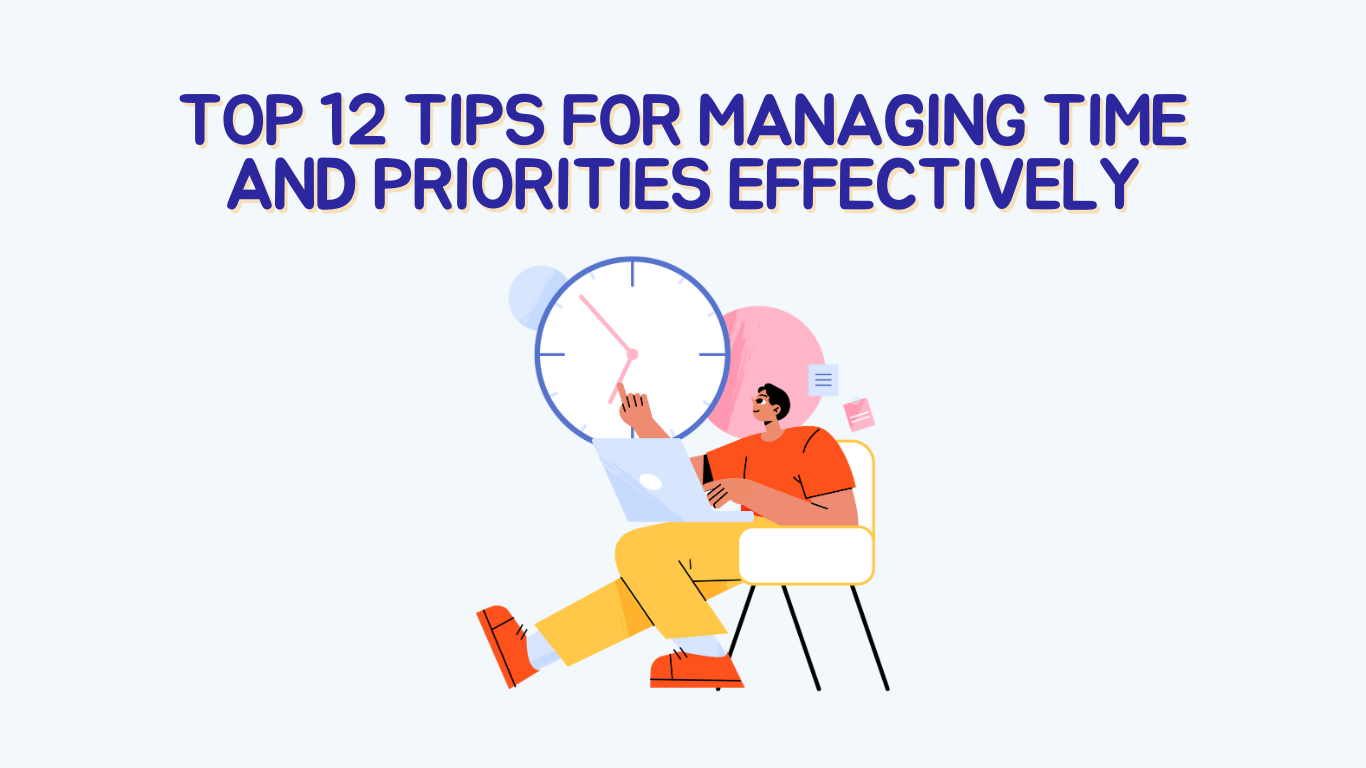Are you overwhelmed by tasks and short on time? This article will give you actionable strategies for managing time and priorities effectively. Discover practical tips to take control of your tasks and boost your productivity.

Key Takeaways
- Start managing your time by tracking how you currently spend it; identify patterns and unproductive habits using tools like time journals.
- Use the Eisenhower Matrix to prioritize tasks based on urgency and importance, ensuring focus on what truly matters.
- Regularly review and adjust your priorities, setting clear goals for clarity and motivation while managing distractions effectively.
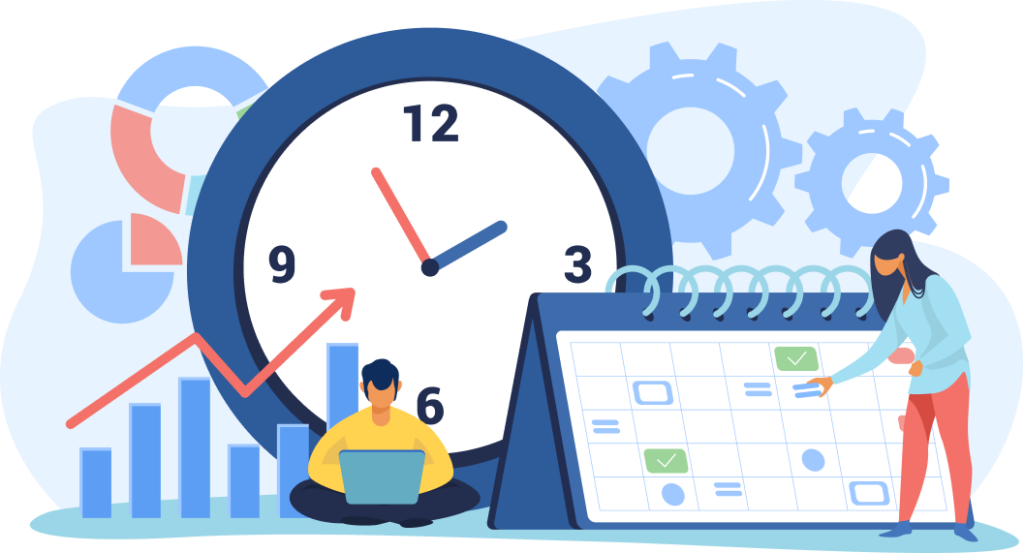
Know How You Spend Your Time
To master time management, it’s important to understand how you spend your time. Ever wondered where all those hours go? Using time management tools can be a game-changer. These tools help you keep track of your activities, providing a clear picture of your daily life. A time journal allows you to record daily tasks and identify unproductive habits that consume your hours.
Analyzing your time tracking results can be quite revealing. You might discover that certain tasks, like commuting or scrolling through social media, are more time-consuming than you realized.
A time journal aids in both tracking and reflecting on your daily activities. It can show you how much time you spend on unnecessary activities and conversations. This reflection is crucial for making informed decisions about how to manage your time effectively.
Disorganization is another silent productivity killer. A disorganized workspace and tasks lead to wasted time and reduced productivity. Assess your time allocation across various activities like work, housework, and leisure to pinpoint where improvements can be made.
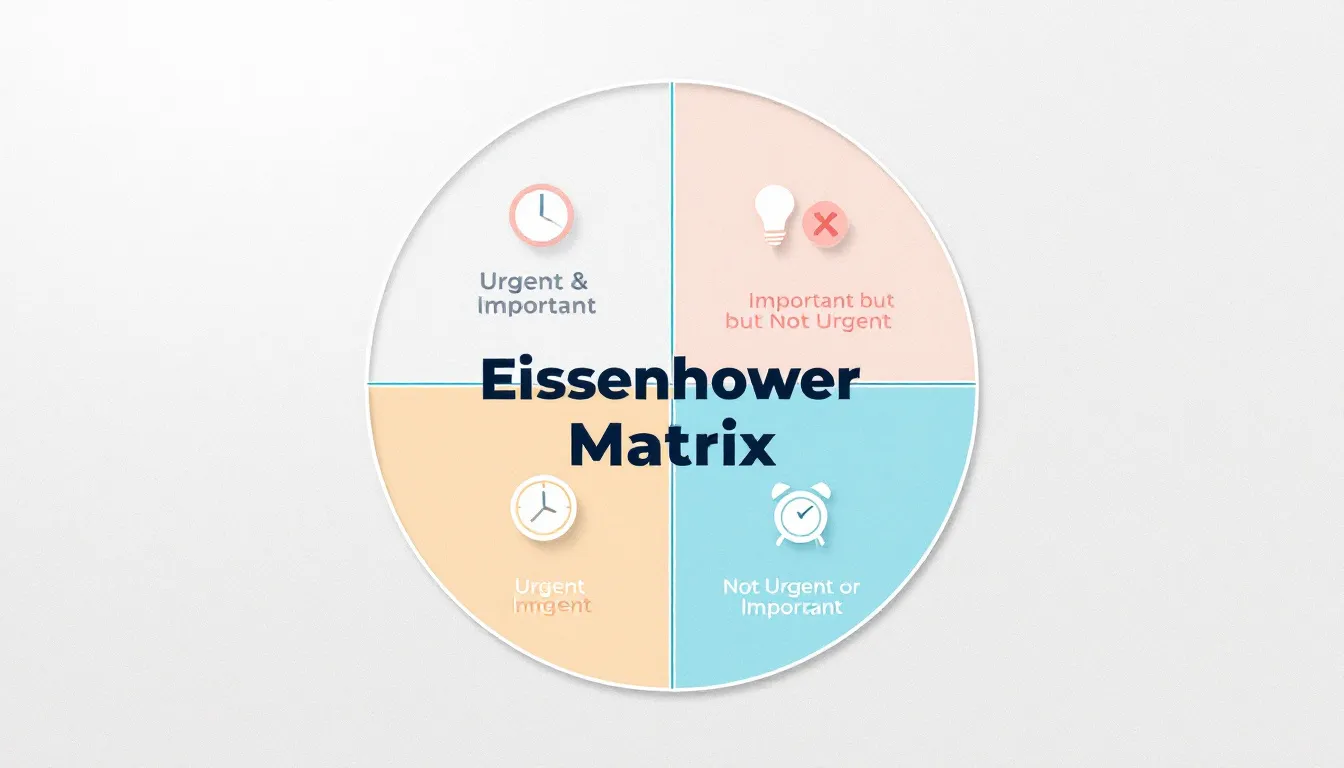
Prioritize Tasks Using the Eisenhower Matrix
Once you know how you spend your time, the next step is to prioritize tasks. The Eisenhower Matrix is one powerful time management tool that helps you categorize your tasks based on their importance and urgency. This matrix divides tasks into four quadrants:
- Urgent and important
- Important but not urgent
- Urgent but not important
- Neither urgent nor important
Urgent tasks are those that require immediate attention, while important tasks contribute to your long-term goals. Urgent and important tasks should be completed first. These are your critical tasks that cannot be postponed.
On the other hand, important but not urgent tasks should be scheduled for later, allowing you to plan and execute them without the pressure of immediate deadlines. The most urgent tasks should always take priority.
Urgent but not important tasks can often be delegated, freeing up your time for higher-priority activities. Tasks that fall into the neither urgent nor important category are typically distractions that can be minimized or eliminated altogether. To effectively categorize tasks, assess each task’s importance and urgency, then decide the correct quadrant.
Using the Eisenhower Matrix can significantly enhance your ability to prioritize and manage tasks. Limiting the number of tasks per quadrant helps maintain an organized and manageable matrix. Visual aids like color-coding can also assist in quickly identifying your priorities.

Create a Daily Task List
A well-structured daily task list is another effective tool to combat poor time management. Start by including actionable items, clearly defining what needs to be done to avoid any ambiguity. A clear structure for your task list can save you time and prevent daily reorganization.
Using a digital task list app can be incredibly beneficial. These apps prevent the loss of important tasks as they can be accessed from multiple devices. Incorporating deadlines or time limits into your task list is crucial for ensuring that tasks are completed on time. Breaking larger tasks into smaller, manageable subtasks can also help you meet deadlines more effectively.
Prioritize tasks in your list based on their importance rather than urgency. Grouping similar tasks together can boost productivity by minimizing the cognitive load of switching between different activities. Digital task management tools can further enhance organization by allowing you to organize tasks and prioritize tasks efficiently.
If digital tools don’t help you stay focused, you can use physical tools, like a whiteboard or journal. Some people feel that physically crossing off tasks on their to do list is more satisfying and motivating than checking them off on an app.

Set Clear Goals
Setting clear goals is a fundamental part of time management. Your goals should be specific, measurable, and achievable. It also helps to have a timeline to effectively manage your time. Vague goals often lead to confusion, but specificity helps you stay on track.
Goals that are achievable and relevant make time management easier. When your goals are practical and aligned with your long-term objectives, it becomes simpler to prioritize important tasks.
Purpose-driven time management helps you stay motivated and focused on what truly matters.
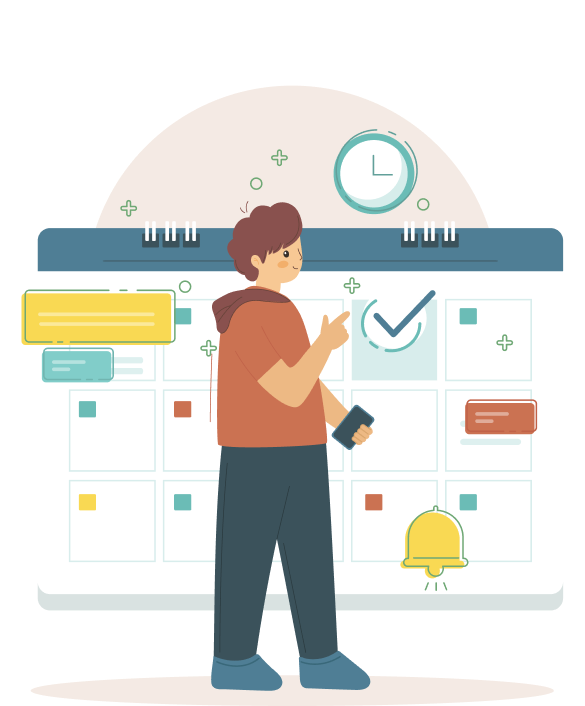
Plan Your Day with Precision
Clear objectives offer a structured approach to achieving daily tasks. Time blocking allows you to allocate specific periods for high-priority tasks, helping you maintain focus and efficiency throughout your day using effective time management strategies.
Reviewing progress and adjusting plans regularly can enhance efficiency and effectiveness. This ensures that you stay on track and adapt to any changes or unexpected tasks that may arise.
Detailed daily planning maximizes productivity and minimizes stress. Integrating clear goals, strategic time allocation, and ongoing progress tracking optimizes your daily routine.

Focus on One Task at a Time
Focusing on one task at a time can seem like a luxury in our multitasking world. However, studies indicate that engaging in multiple tasks at once tends to reduce overall productivity. Multitasking often leads to decreased productivity and wasted time.
The Pomodoro Method can be an effective strategy to enhance concentration. This method involves breaking work into short intervals, typically 25 minutes, followed by a short break.
Practicing mindfulness can also help enhance focus and minimize time spent on distractions. Learning to say ‘no’ maintains focus on critical tasks and prevents overwhelm.
Setting personal boundaries is key to maintaining focus on your priorities and avoiding burnout. To stay focused, eliminating distractions from your workspace enhances concentration.
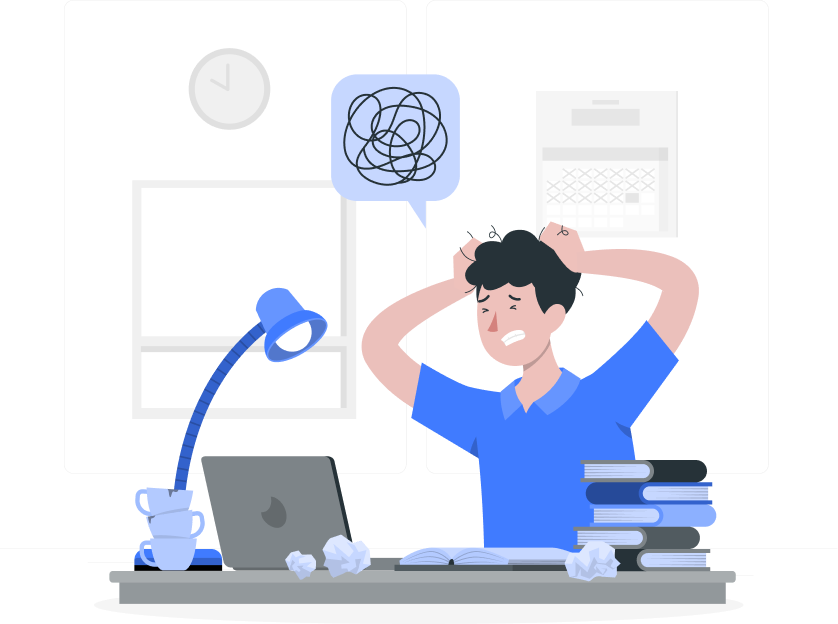
Minimize Distractions
Maintaining focus on priority tasks requires minimizing distractions. Identifying common distractions and finding ways to minimize them can significantly improve your productivity.
Turning off notifications, using distraction-blocking apps, and activating ‘Do Not Disturb’ mode effectively improve focus.
Creating a structured routine helps to keep distractions at bay and maintain productivity. Implementing email filters can reduce interruptions by sorting messages based on importance. Recognizing and avoiding time-wasting coworkers can significantly improve time management.

Delegate Tasks Effectively
Delegating tasks effectively allows you to focus on higher-value tasks while empowering others. Delegation involves assigning the responsibility for a task to someone else. This not only alleviates feelings of overwhelm but also allows for more engagement in fulfilling activities.
To delegate successfully, provide clear expectations and context to ensure alignment with organizational goals. Clarify priorities and define the task and your expectations. Establishing open communication channels during delegation helps manage progress and addresses any uncertainties. Periodically check the person’s progress and provide assistance if needed.
Allowing room for failure encourages innovation and helps employees explore alternative approaches to tasks. Recognizing and crediting team members for their contributions can enhance engagement and motivate future collaboration. Choose someone with the appropriate skills, experience, interest, and authority to delegate tasks effectively.

Take Regular Breaks
Taking regular breaks is essential for maintaining concentration and productivity. Incorporating breaks into your schedule can enhance performance and reduce stress levels. Micro-breaks during the day can significantly bolster both well-being and productivity.
Relaxing activities during breaks reset your mood and improve mental health. Social interactions during breaks can enhance feelings of recovery and belonging. Activities such as short walks, getting some fresh air, or meditation are recommended during breaks to refresh the mind.

Learn to Say No
Saying no is a crucial skill for effective time management. Saying no to low priority or overwhelming tasks reduces commitments and frees up time for important tasks. It’s important to communicate calmly and firmly when declining a task.
Providing valid reasons when declining requests can lead to better understanding from others. Taking time to consider requests before responding helps evaluate their impact on your schedule.

Automate Repetitive Tasks
Automation tools efficiently handle repetitive tasks, freeing up time for more important activities. Tools like Zapier and IFTTT can manage both professional and personal tasks. These tasks include data entry, email management, and handling recurring actions.
Automation tools significantly reduce time spent on routine tasks, allowing more focus on essential work and personal activities. Integrating automation in daily routines can enhance productivity by minimizing manual labor.

Regularly Review and Adjust Priorities
Regular check-ins realign your day to day tasks with evolving goals and priorities. Establishing clear goals enables you to track your progress throughout a project effectively.
Consistent check ins help you maintain focus on your most important tasks. This not only maintains motivation but also helps in prioritization.
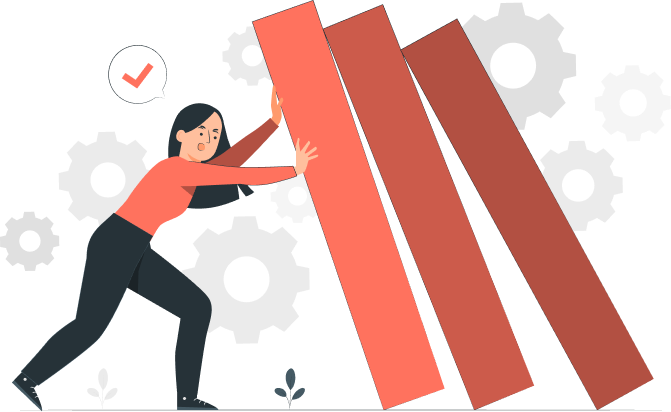
Common obstacles when it comes to managing time and priorities
One of the most common obstacles in managing time and priorities is procrastination. Procrastination leads many individuals to delay important tasks until the last minute.
Another challenge is prioritizing tasks, where people often focus on less significant activities instead of critical ones, including the most challenging tasks.
Distractions and interruptions, such as social media notifications and workplace disturbances, significantly disrupt concentration and productivity. A distraction-free environment, like a quiet workspace, reduces interruptions and enhances focus.
Using prioritization tools, such as the Eisenhower Matrix, can help clarify which tasks to tackle first based on their urgency and importance, enhancing task prioritization and priority management.

Summary
In summary, effective time management and prioritizing tasks are essential skills that can significantly impact your productivity and well-being. By understanding how you spend your time, using the Eisenhower Matrix, creating daily task lists, setting clear goals, and planning your day with precision, you can take control of your daily life.
Remember to focus on one task at a time, minimize distractions, delegate tasks effectively, and take regular breaks to maintain a healthy work-life balance.
Regularly reviewing and adjusting your priorities will ensure that you stay on track and work towards your long-term goals.
Implement these strategies, and you’ll find yourself managing your time more effectively, reducing stress, and achieving greater success.

Frequently Asked Questions
How can I start tracking my time effectively?
To start tracking your time effectively, consider using time management apps or keeping a time journal. These tools will help you pinpoint unproductive habits and manage your day better.
What is the Eisenhower Matrix?
The Eisenhower Matrix is a handy tool for organizing your tasks by sorting them into categories of importance and urgency, making it easier to prioritize what really matters. It’s a game changer for managing your time more effectively!
How can I create an effective daily task list?
To create an effective daily task list, make sure to include actionable items and set deadlines for them. Group similar tasks together to streamline your workflow and enhance productivity.
How can automation tools help in time management?
Automation tools can really save you time by taking over repetitive tasks, allowing you to focus on what truly matters in your day. This efficiency can make a significant difference in managing your schedule!

